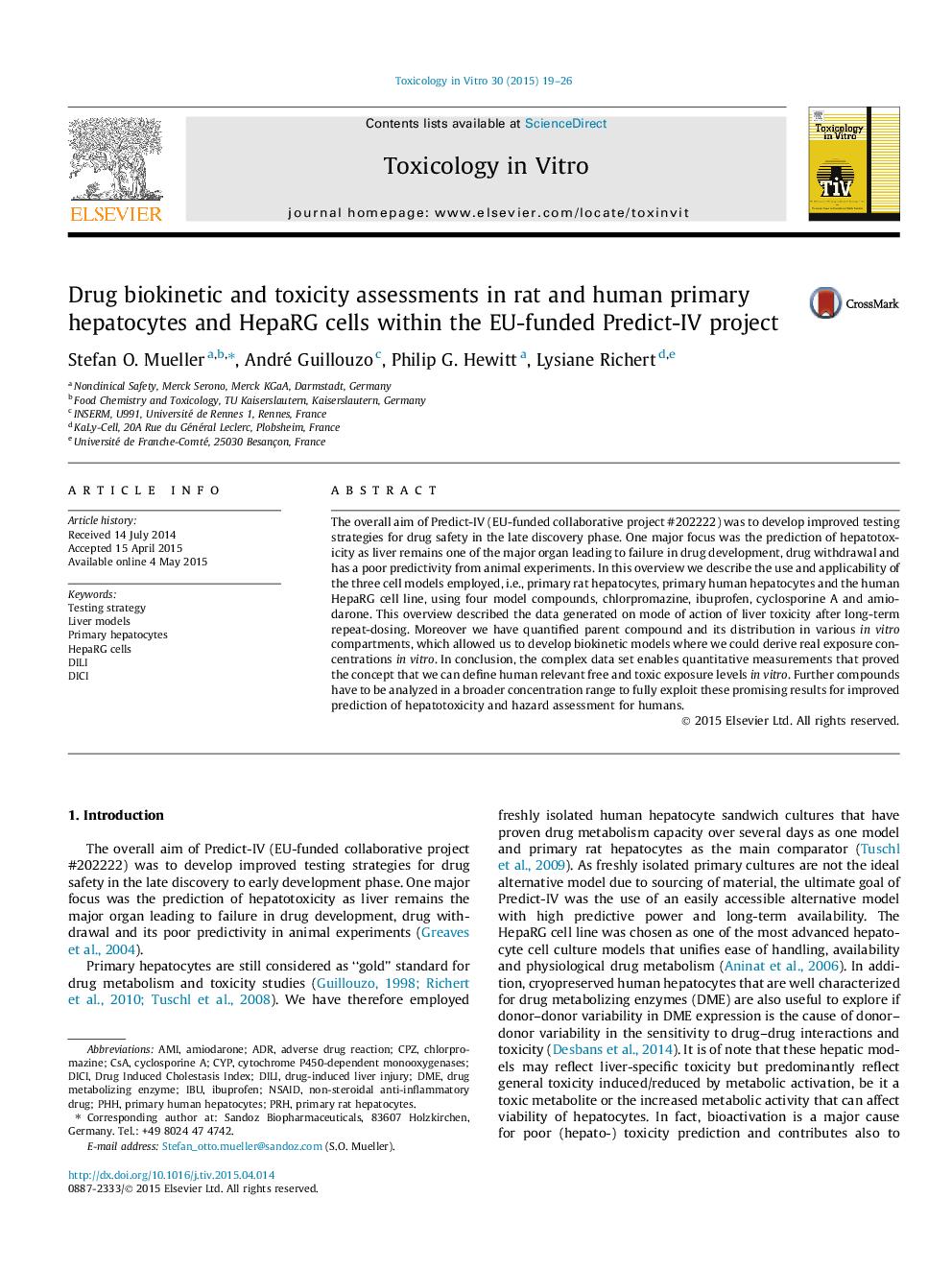| Article ID | Journal | Published Year | Pages | File Type |
|---|---|---|---|---|
| 5861284 | Toxicology in Vitro | 2015 | 8 Pages |
â¢Overview on the work performed within the EU-funded Predict-IV project.â¢Selected drug compounds analyzed in rat and human primary hepatocytes and HepaRG cells.â¢Analysis of mode of actions, biokinetic and toxicity assessments.â¢Description of quantitative measurements.â¢Prove of the Predict-IV' concept to define human relevant free and toxic exposure levels in vitro.
The overall aim of Predict-IV (EU-funded collaborative project #202222) was to develop improved testing strategies for drug safety in the late discovery phase. One major focus was the prediction of hepatotoxicity as liver remains one of the major organ leading to failure in drug development, drug withdrawal and has a poor predictivity from animal experiments. In this overview we describe the use and applicability of the three cell models employed, i.e., primary rat hepatocytes, primary human hepatocytes and the human HepaRG cell line, using four model compounds, chlorpromazine, ibuprofen, cyclosporine A and amiodarone. This overview described the data generated on mode of action of liver toxicity after long-term repeat-dosing. Moreover we have quantified parent compound and its distribution in various in vitro compartments, which allowed us to develop biokinetic models where we could derive real exposure concentrations in vitro. In conclusion, the complex data set enables quantitative measurements that proved the concept that we can define human relevant free and toxic exposure levels in vitro. Further compounds have to be analyzed in a broader concentration range to fully exploit these promising results for improved prediction of hepatotoxicity and hazard assessment for humans.
